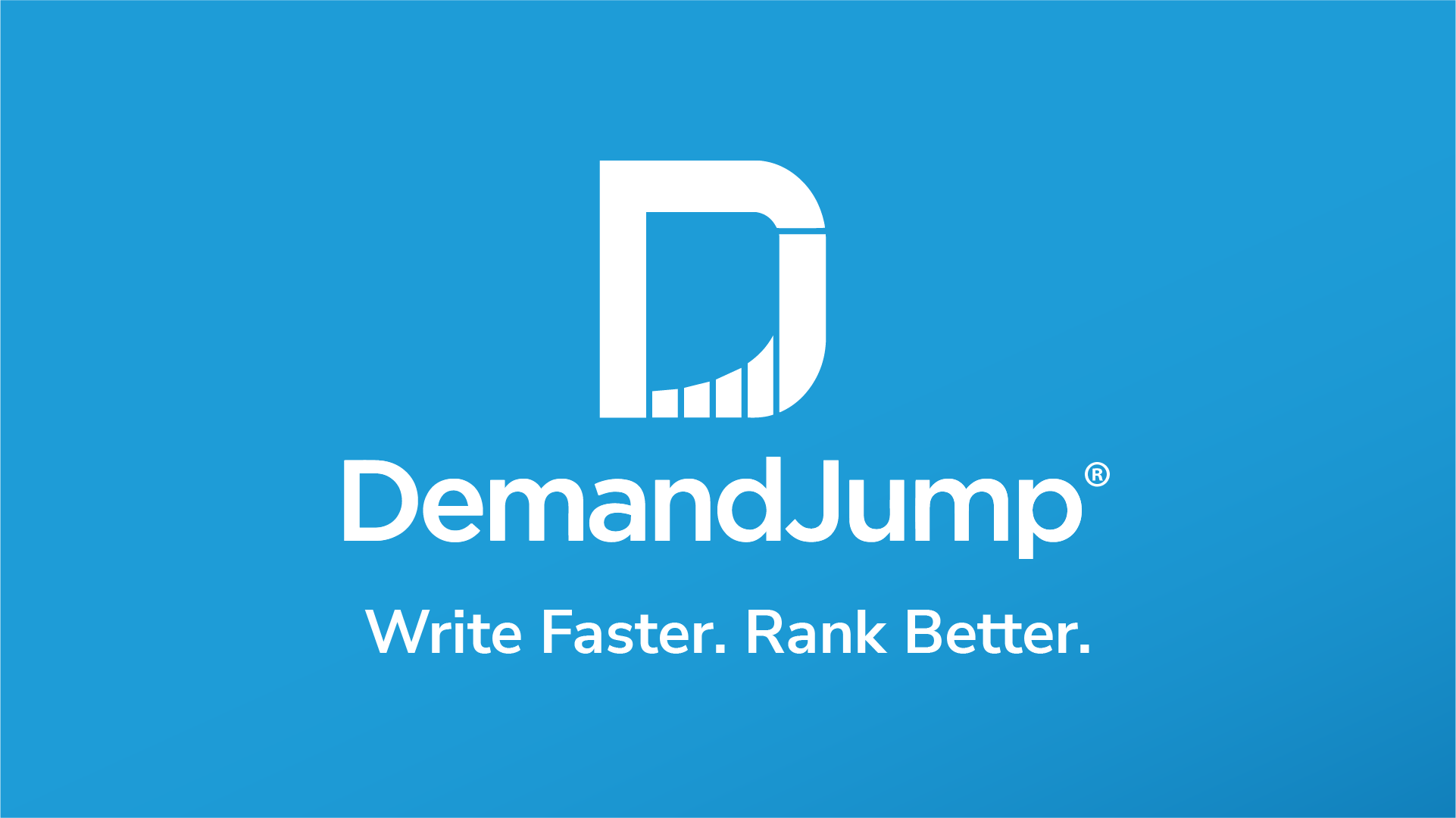See Insights in Action
By embracing DemandJump's approach to SEO, we have been able to increase our organic rankings within just 2 weeks of implementing recommendations. This helped us see a 22% increase in organic search month-over-month.
Robert Jacko Vice President Digital Marketing @ Homage
DemandJump has become a crucial extension of our marketing team, providing game changing insights to fuel and propel all aspects of our digital marketing efforts. The DemandJump platform is a must have, we are seriously impressed.
Tim Lavinder Director of Ecommerce @ Hotsox
We used to spend hours looking for insights in dozens of tools and reports. Now we log into one place to find out what customers are doing and how to meet them where it matters most.
Zach Roop Digital Marketing Manager @ Dometic
We use DemandJump recommendations as our digital to-do list. We love going in and seeing the recommendations and knowing what to do next.
JoLynda Wilson Marketing Director @ IWC
Trusted by Brands Around the World
Consumer Insights
Find out what your target audience cares about for any category, product, or topic, with the click of a button.
Know What to Write About
Eliminate the guesswork and align your content strategy to actual user behavior.
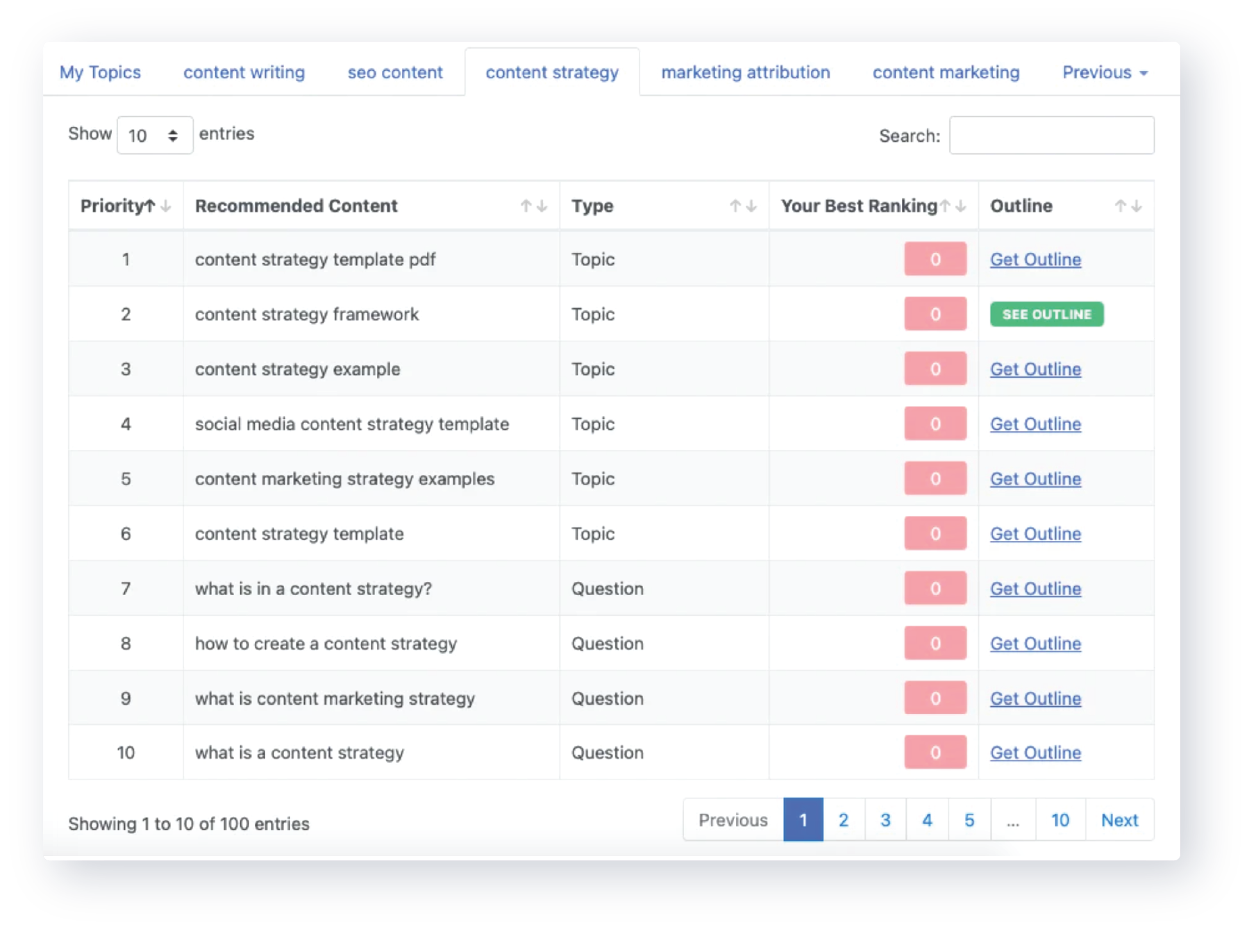
Know Which Keywords Matter
Get a prioritized list of the exact keywords that matter for your audience.
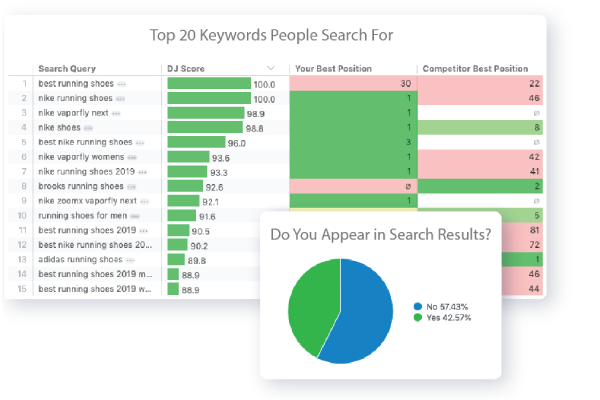
Automatic Customer Journey Map
Automated customer journey mapping tells you the keywords, questions, websites and videos your audience consumes for each stage of the buying process.
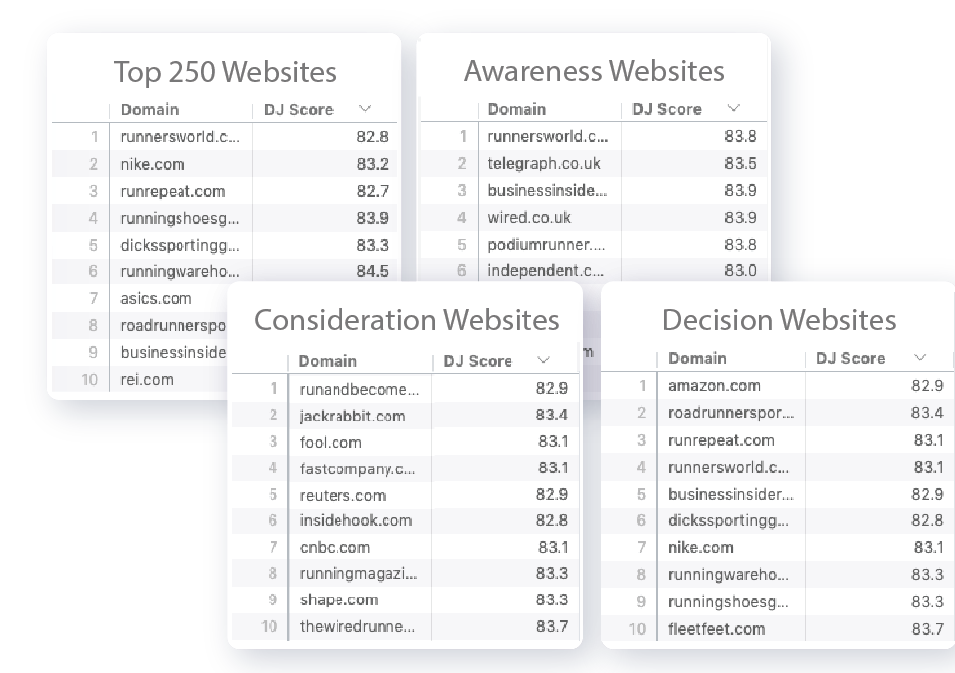
Get Free Consumer Insights Now
Any marketer will tell you that customer insights are the key to creating great content. If you don't know who you're talking to, you can’t know how to engage them. If you don’t engage them, you'll never convert them. Insights are the holy grail of building a picture of your audience in a meaningful way. Like the holy grail, they’re elusive.
The reason so many marketing professionals have trouble pinpointing customer insights is not a lack of information. It's the exact opposite. We have a wealth of data at our fingertips. There is information to be culled from virtually every contact point your company has with current and prospective audience members. Every piece of information is not an insight, though. Every insight will not be important for your overall strategy.
When researching to find customer insights, the most important aspect is that you're asking the right questions. You don't want any insight, you want the insights that will help you fix an issue. That issue might be a problem with conversion or understanding why you're not retaining customers, for example. You don't sift through data and just find a ready-made insight. Data and insights are not the same thing.
The insights come when you connect the dots between the questions you're asking and the data you're finding. What's slightly amazing is that the insights often strike in a surprising way. A great insight is something you haven't heard before or thought before. Where marketers fall off-track is when they guess at these insights. An assumption isn't an insight, either. When you guess at what your customer wants or needs, you have as much chance of being wrong as you do being right.

Customer insights examples: what they are and why you need them
A key insight example might be something that changes the way you understand your customer, but it also might be something that reinforces an already held belief. Both are important aspects of insights.
Let's break this down to understand what an insight is and why it's important.
An insight is information that gives you greater understanding about your customer. This might include the audience's views, beliefs, pain points, and things that bring them joy. Consumer insights are also not the only kinds of insights that are useful. Business insights examples, for instance, provide a better view of the business as a whole or give you the tools to inform actionable changes.
Insights are important because they help you identify with and understand the complexities of your customers. The data can be culled from a number of places. Often the best place to start is by asking the right questions. If you're trying to reach a wider market, those questions might be centered around competitor research. How can you tap into their customer base? What do you offer that sets you apart in the market? Where are the customers who need or want that specific service?
A consumer insight report example brings all the data together surrounding an existing question. Sometimes the data you're looking at confirms the belief you had when you asked. Often, it will show you some new way to look at the issue. Customer insights are found in that sweet spot between the data and your analysis.
Why are insights so important?
Insights help you engage with your customer in a real way. They put the consumer's interests as the priority, which improves every aspect of the way you serve them. Great insights don't just change the way you market to the audience. They can inform new products you create, the way you brand your business, and decisions about future investments and actions.
Customer insight tools to help cull information
Data can be found everywhere and that can be the most frustrating part of the process. Not all data will be useful. Different types of data can be essential for certain insights. Often, the most valuable insights come from information that the customer provides.
Data is often broken into two categories, qualitative and quantitative data. Quantitative data deals with numbers and can be measured in a factual or definite way. Qualitative deals with the quality and is not as easy to measure but can be useful to categorize the information or give you a way to judge and classify it.
Because there is so much information, it can be confusing to determine how to find consumer insights data. Customer insight research techniques keep evolving and there are tools to help automate your efforts. Of course, insights by their nature are reasoned and can't be reached solely by machine learning. But different tools can help you organize and collect the data necessary to make your analysis far more efficient.
Information can be culled from social media shares and mentions, customer surveys, internal analytics from your web properties, internal analytics from your various campaigns, from direct contact with your customer base, and from the data available on the overall market.
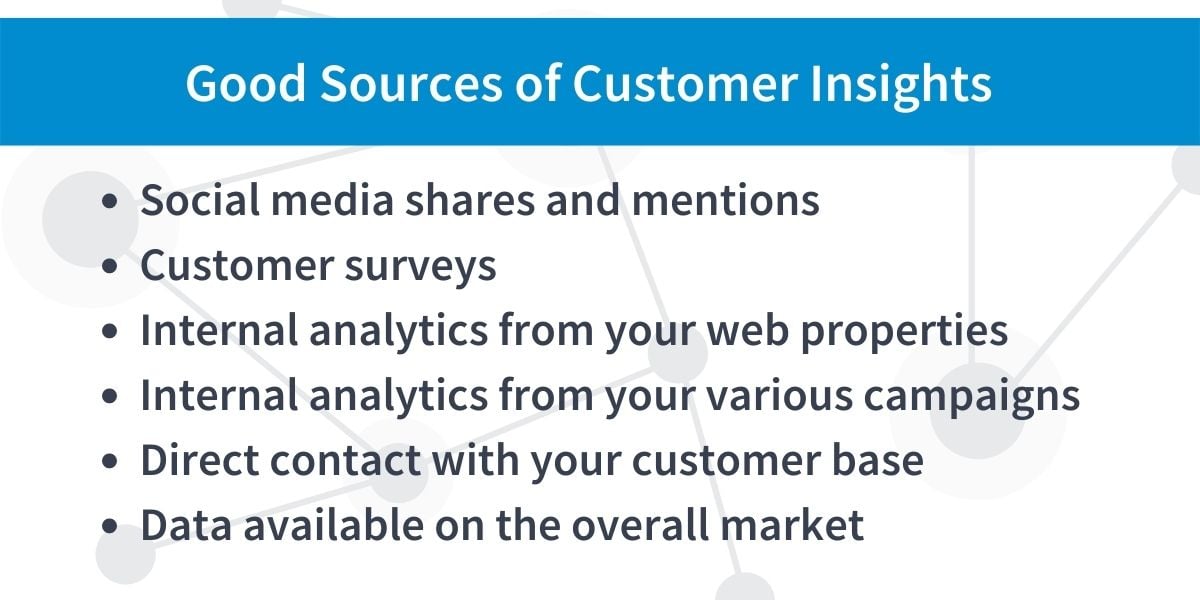
Google even offers full tutorials on the best tools to use to gain insights. These tools focus on helping the user find the right information and the best destination based on their search. That goal aligns with your goal of attracting the right audience for conversion, which can help you improve ROI while increasing your credibility in search.
How are consumer insights obtained?
There are numerous customer insight research techniques available and, as with all things marketing, there will be a new method or tool every time you look. While the tools and technology change, some methods for analyzing information to gain insights are modeled on time tested business and marketing protocols.
The customer is always right. In reaching for insights, your main goal is to prioritize the customer's experience and engagement. This has always been a cornerstone of good customer service. This can be a good premise to keep in mind.
A customer insights strategist doesn't reinvent the wheel on how customer service is approached. They design a customer insight framework that helps them understand their audience to meet their needs. Instead of directly serving the customer in a mom-and-pop store, they're directly serving multiple customers over a wide swath of area.
A customer insight strategy is the blueprint or plan you use to develop your insights. While insights might be fundamentally surprising when you find them, the process to cultivate the information is often fairly straightforward. Your strategy might include tools, such as a customer journey map. This is a visual tool that helps you understand the experience of your customer as they move through your sales funnel. You may also develop a customer insight framework, which is a detailed representation of who your customer is, where his or her pain points are, and what their main objectives might be with regard to your products.
When developing your insights, there are some methods to gain information that are invaluable. Data that comes directly from the customer is essential and that comes from communication with your audience. A great way to serve the customer is by knowing the exact things they want. When you know the searches they conduct, the websites they visit and videos they watch, you can be there to anticipate their needs.
Communication also deserves a response. This means responding to reviews, even negative ones, in a way that makes the customer feel heard and valued. Your audience is more likely to supply personal information when they build trust with your brand.
Consumer insights data and how to interpret it
The tricky part isn't collecting the data, it's interpreting that data to find insights and then understanding the types of consumer insights you need. There are different types of insights. Not all of them will be beneficial for the quandary you're currently trying to answer. On the other hand, you'll often find insights you weren't looking for, which may be useful elsewhere. That's basically to say that nothing should be thrown away, but you need to maintain focus on the particular issue you're trying to solve in order to make your consumer insights report work for you.
Your insights may be qualitative or quantitative in nature. Both have value to influence how you view and engage with the customer.
Using your analytics, you can compile a great deal of data about set questions. You can change the scope of the information you're looking at in order to build more informed reporting. Once you arrive at an insight, you can often check the veracity of that assumption by analyzing other aspects of data.
For instance, if you find that a majority of your audience on a social media platform shares a trait or demographic, that may not indicate your core market is all in that demographic. It may only indicate that the demographic more heavily uses that platform. When you compare it to the demographic of your web visitors or audience on another platform, the overall information informs your insight.
Insights often come from unexpected places. You might find that a known data point suddenly has more value when compared to your own customer analytics. For instance, you might find that the recent data suggests increased user activity on a specific platform and your customer analytics show that a large portion of your audience falls into the biggest user demographic on that platform. Obviously, it makes sense to increase campaign efforts on that channel.
Conversely, general information about the market may not offer great insights for your target audience if they value your service based on a specific thing. For instance, if your service is built on individual, hand-crafted items a statistic that shows larger interest in low prices may not inform your marketing efforts. One of a kind items are often priced higher than mass-produced and your ideal audience may purposely differ in mindset from that data point.
How to build a customer insights strategy
Your customer insights strategy acts as a plan for how you develop your insights. You can find a customer insight strategy template online, if you're looking for a fast and easy solution. But fast and easy aren't usually good, especially when you're dealing with higher level intelligence like this.
Many businesses use and recognize the needs for customer insights, but often they don't have a cohesive insight strategy. Without this blueprint, your efforts may have mixed results. When you consider the fact that the insights you arrive at should also inform every other business strategy, it's important that you build a method to efficiently gain customer insights in a productive way.
For many businesses, the best method to devise their strategy is by using an insight strategist and building an insight team. An insight strategist is often the lead or one of the leads on developing the strategy and culling insights from the analytics. This will usually be a marketing professional with experience in technology and analytics who has the ability to take the data and reporting and translate it into actionable pieces of information that can be disseminated to the rest of the company for use.

An insight team can offer tremendous ROI for your customer insights strategy. This team consists of marketing professionals who go through data in order to gain insights. Ideally, the insight team can provide great ideas on how to move the company forward. This can come in the form of insights that improve product development, marketing initiatives, business strategy, and customer service. It is important that the team is given the authority to jump into a leadership position with regard to offering projections for future growth. Often, insight teams deal solely with data that focuses on historical productivity, which can be helpful to build insights to improve processes but is too finite to be innovative.
As with any strategy, the insight strategy should evolve as new tools become available and techniques are outdated. Check out DemandJump's pricing to see what tools you could use today!
Insights Resources
Consumer InsightsConsumer Behavior
Consumer Behavior for Marketers
Consumer Insights and Analytics
Customer Insight Research Techniques
Customer Journey Map
Pillar Page Content
SEO Content Strategy
Types of Consumer Insights
Other Resources
Channel Optimization
Consumer Behavior
Consumer Insights
Consumer Insights and Analytics
Competitor Analysis Tools
Content Marketing
Content Strategy
Cross-Channel Analytics
Customer Insight Research Techniques
Customer Journey Map
Market Intelligence
Marketing Analytics Techniques
Market Research
Marketing Attribution
Opportunities of Internet Marketing
Types of Consumer Insights




